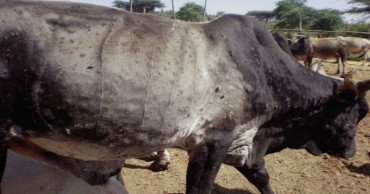skin disease
Is There Any Alternative to Brick Kilns?
For centuries, brick kilns, characterised by fiery chimneys and billowing smoke, have played a key role in the construction industry. Despite their contribution in providing essential building materials, their operations entail harmful impacts on human health, biodiversity and environment.
What is a Brick Kiln?
A brick kiln is a specialised facility used in the production of bricks, fundamental building blocks for construction. These kilns play a vital role in shaping the urban landscape. The process involves heating clay or other materials in furnaces to create bricks and contributes to the growth of infrastructure. However, the traditional methods employed in brick kilns can have environmental and health consequences, making it imperative to explore sustainable alternatives and technologies.
Impacts of Brick Kiln on Health
Particulate Matter Emissions
Brick kilns pose a major health risk due to the emission of particulate matter, including pollutants like sulfur dioxide and nitrogen oxides. Inhaling these pollutants can irritate the lungs, leading to coughing, wheezing, and shortness of breath. Prolonged exposure may contribute to chronic obstructive pulmonary disease (COPD).
Read more: 9 illegal brick kilns shut down, fined Tk 47 lakh in Sirajganj
Respiratory Issues
Prolonged exposure to emissions from brick kilns can lead to a range of respiratory problems. From workers within the kilns to residents in nearby communities, the inhalation of pollutants can result in asthma, bronchitis, and other respiratory ailments.
Occupational Health Risks
Workers directly involved in brick kiln operations face occupational health risks due to exposure to high temperatures, dust, and pollutants. Adequate safety measures and protective equipment are crucial to mitigating these risks.
Cardiovascular Problems
Brick kiln fumes, laden with pollutants, can obstruct arteries, elevate blood pressure, and disturb heart rhythms. These adverse effects heighten the likelihood of heart attack, stroke, and heart failure, underlining the severe cardiovascular risks associated with exposure.
Read more: 4 brick kilns shut down for polluting air in South Keraniganj
Skin Problems
Dust and irritants emanating from brick kilns inflict skin torment on workers, causing rashes, itching, and burns. The daily grind leaves exposed skin raw, rendering workers vulnerable and uncomfortable in their work environment.
Cancer
Inhaling brick kiln fumes conceal invisible dangers, harbouring carcinogens that escalate cancer risks over time. Exposed workers face heightened threats of lung, skin, and other cancers, emphasising the risks associated with prolonged exposure.
1 year ago
Workshop discusses measures to prevent lumpy skin disease
Researchers, scientists and livestock experts at a workshop in the capital on Thursday discussed measures to control and prevent the lumpy skin disease (LSD).
5 years ago
Lumpy skin disease causes concern for Faridpur cattle farmers
Cattle farmers are scratching their heads at the sudden outbreak of lumpy skin disease affecting the livestock over the last two and a half months.
6 years ago





